
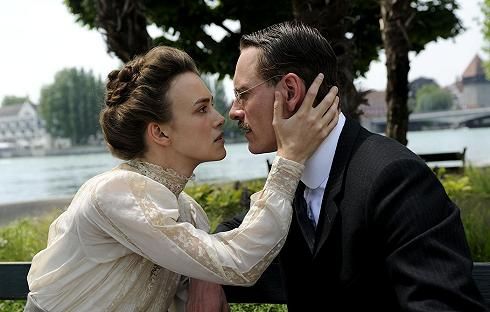
(danger06.jpg)

Subj:I LOVED seeing
"The Piano"!
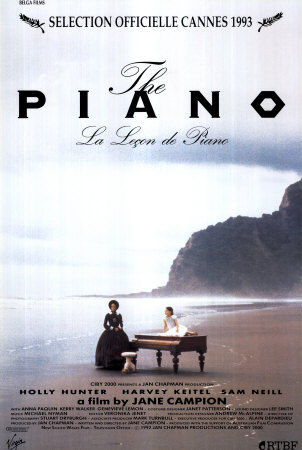
(pianoholly.jpg)
From: diane@vancouver.ca
To: barclay1720@aol.com
Date: Thu, Feb 9, 2012 7:51 pm.
Pacific Standard Time
Hi Kato,
How're you doing, kiddo? Keeping out of trouble, I hope.
I saw you in the library Tuesday evening as I was heading home from my Kundalini Yoga class ...what a class!
such fun.
Just wanted to let you know I LOVED seeing "The Piano" again after all these years and thanks so much for bringing it to my attention.
I don't actually remember it being so erotic, but it certainly was as exciting as you said.
Awesome photography, great acting, just great, and a quirky story to boot.
My boyfriend was over last night.
I made a delicious chicken tetrazzini and he loved it.

(tetrazzini.jpg)
I was telling him I was half-way through this DVD and it intrigued him, he wanted to watch it.
So we did & he loved it.
He's a serious cinephile.
unfortunately, just at a critical spot the DVD or the player (I don't know which) went on the fritz and we couldn't make out anything from the scramble.
So, we don't know how it ended.
We got to the point where her husband says, "I trusted you! I trusted you!"
He has just intercepted the key sent to Baines with the enscription of love on it.
The husband goes beserk and knocks her around ... and ...the machine goes on the fritz.
Do you remember, Kato, how it ended?
Just a brief summary would be great.
I recall something about her ending up with Baines, minus a finger?
Is this correct?
Any help you could give would be much appreciated, of course.
You're an amazing sleuth.

Love, Diane ~

Oh, too bad. The machine went on the fritz, eh? So, you didn't see the last part, did you?

No, I didn't. How did it end?
I've already told you about it. Don't you remember?
No, I don't...'cause I was preoccupied with my own piano lesson.
Well...it goes like this:
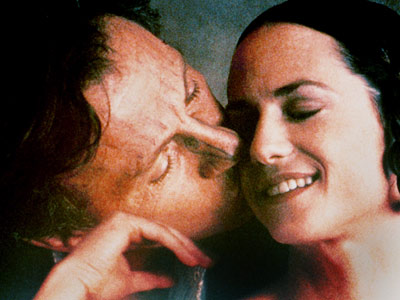
(piano900.jpg)
Ada sends her daughter with a package for Baines, containing a single piano key with an inscribed love declaration that says "dear George, you will have my heart, Ada McGrath".
Flora has begun to accept Alistair as her "papa" and is angered by her mother's infidelity.
She brings the piano key instead to Alistair.
After reading the love note burnt onto the piano key, Alistair furiously returns home and cuts off Ada's index finger with an axe to deprive her of the ability to play her piano.
He then sends Flora to Baines with the severed finger wrapped in cloth, with the message that if Baines ever attempts to see Ada again, he will chop off more fingers.
After Ada recovers from her injury, Alistair sends her and Flora away with Baines and dissolves their marriage. They depart from the same beach on which she first landed in New Zealand.
While being rowed to the ship with her baggage and the piano tied onto a Maori longboat, Ada feels that the piano is ruined as she can no longer play and insists that Baines throw the piano overboard.
As it sinks, she deliberately puts her foot into the loop of rope trailing overboard.
She is rapidly pulled deep underwater connected by the rope to the piano — but then she changes her mind and kicks free to be pulled back into the boat.
In an epilogue, she describes her new life with Baines and Flora in Nelson, where she has started to give piano lessons in their new home, and her severed finger has been replaced with a silver finger made by Baines.

I see...so, they ended up with a sea of happiness, didn't they?

Yes, you're absolutely right. By the way, Diane, did you see "A dangerous Method"?
Yes, I did. I've already told you about it. Don't you remember, Kato?
Well, I was preoccupied with "The Piano."

Don't pull my leg, kiddo.
How did you like it?
Well...it was quite interesting, but more shocking than I expected.
Oh...in what way?
You see, Kato... I'm always trying to be open-minded, but while I was watching the movie, I thought Sabina Spielrein---a patient and a heroine---went too far...too far beyond my understanding.
A Dangerous Method
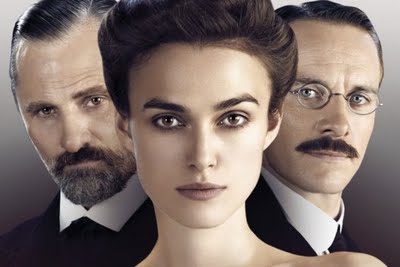
(danger03.jpg)
A Dangerous Method is a 2011 historical film directed by David Cronenberg and starring Viggo Mortensen, Michael Fassbender, Keira Knightley and Vincent Cassel.
The screenplay was adapted by Academy Award-winning writer Christopher Hampton from his 2002 stage play The Talking Cure, which was based on the 1993 non-fiction book by John Kerr, A Most Dangerous Method: the story of Jung, Freud, and Sabina Spielrein.
The film marks the third consecutive and overall collaboration between Cronenberg and Viggo Mortensen (after A History of Violence and Eastern Promises).
This is also the third Cronenberg film made with British film producer Jeremy Thomas, after completing together the William Burroughs adaptation Naked Lunch and the J.G. Ballard adaptation Crash.
A Dangerous Method was a German/Canadian co-production.
The film premiered at The 68th Venice Film Festival and was also featured at the 2011 Toronto International Film Festival.
Plot
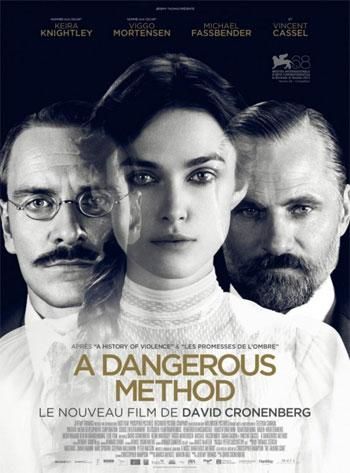
(danger01.jpg)
Set on the eve of World War I, A Dangerous Method is based on the turbulent relationships between Carl Jung, founder of analytical psychology, Sigmund Freud, founder of the discipline of psychoanalysis, and Sabina Spielrein, initially a patient of Jung and later a physician and one of the first female psychoanalysts.
A Dangerous Method
2011 Official Trailer
SOURCE: "A Dangerous Method"
Wikipedia, the free encyclopedia

Really?...How far did Sabina go beyond your understanding?

Sabina isn't just a mentally ill seductress but she is a woman stifled by expectation, attempting to grapple with the intense shame of repressed sexuality.
Oh... the intense shame of repressed sexuality?
Yes, with Carl Jung's help, Sabina was trying to speak some unspeakable things no one had ever asked her to articulate before. This is the talking care, and this is what the movie's title means---"A Dangerous method."
I see...sounds fascinating. But what are those unspeakable things?
Well..., Sabina is a young attractive woman, coming from a wealthy family of a respectable middle or upper class. Apparently, she has an intense shame of repressed sexuality, but she tries to speak out that she was once sexually aroused by her father beating her to the point that she masturbated. This is the thing I cannot understand.
So, Sabina is quite mazochistic, eh?
You're telling me, Kato...Sabina tried to speak out but couldn't let these things out of her mouth. This is where her facial deformity comes from.
Facial deformity?
Yes, Sabina's jaw is practically dislocated by fierce tics and her body is contorted as she convulses.
Wow!...must be a quite shocking scene.
Yes, it is indeed.
You know what, Diane? I think, the relation between Sabina and her father is a strange case of Electra Complex.
Why is that?
You see, Diane...Sabina was once sexually aroused by her father beating her to the point that she masturbated.
Yes, that's right. This is the thing I cannot understand.
You know what, Diane? Sabina is close-minded while you're open-minded. That's the reason you cannot understand her erotic arousal by her father's beating.
How come Sabina is close-minded in the first place?
Sabina was living in the Victorian era, in which you could not speak publicly about sex, childbirth, and such matters, at least in the respectable middle and upper classes.
But upper-class men and women indulged in adulterous liaisons in those days, didn't they?
You're right on, Diane. I think, a double standard existed in the Victorian era.
But kato, do you really think that Sabina loved his father?
Yeah, I belive so ... 'cause she was sexually aroused by her father's beating.
I doubt...'cause love is not the same as mere sexual arousal. Sabina might have been aroused by the beating even if she had hated her father.
I see...but that's the reason I would call this case as a strange one of Electra Complex. If Sabina had lived in the post-World War II era in Japan, she might have enjoyed her life with her father as Noriko lived with her father.
Who's Noriko?
She is a heroine played by Setsuko Hara, the famous Japanese actress, in the movie: "Late Spring" directed by Yasujiro Ozu.

(hara112.jpg)
Setsuko Hara
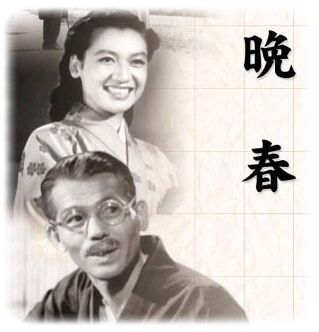
(hara111.jpg)
"Late Spring" sketch
Late Spring (晩春) is a critically acclaimed black-and-white Japanese film drama, directed by Yasujirō Ozu (1903–1963), first released in Japan in September 1949.
Based on the short novel "Father and Daughter (父と娘)" by Kazuo Hirotsu, the story concerns a young woman who lives happily in Kamakura with her kindly professor father, a widower.
He decides that she must find a husband and, despite initial resistance, she accepts the inevitability of their separation and marries, leaving the father alone.
The work belongs to the type of Japanese film known as shomingeki, a genre that deals with the ordinary daily lives of working class and middle class people of modern times.
The film stars Chishu Ryu, a performer featured in most of the director’s movies, and Setsuko Hara, making her first of six appearances in Ozu’s cinema.
It is the first installment of Ozu’s so-called “Noriko trilogy” — the others are Early Summer (晩秋, 1951) and Tokyo Story (東京物語, 1953) — in each of which Hara portrays a young woman named Noriko, though the three Norikos are completely distinct and unrelated characters, linked primarily by their status as single women in postwar Japan.
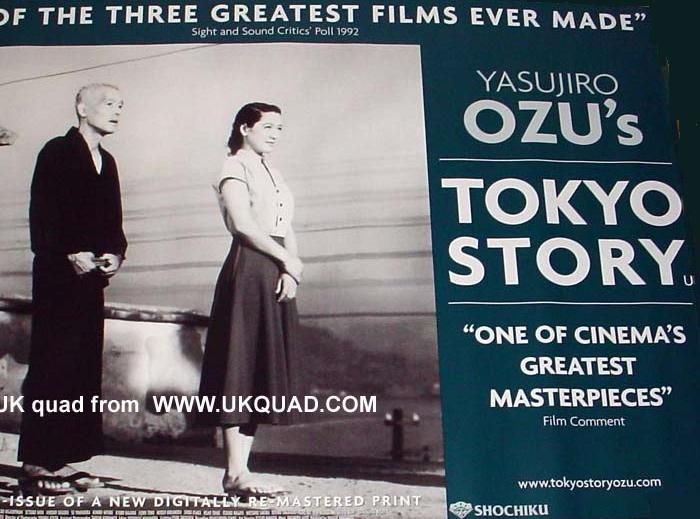
(tokyostory.jpg)
Late Spring is frequently regarded as the initial film of the director’s final creative period, "the major prototype of the director's 1950s and 1960s work," which is characterized by, among other traits, an exclusive focus on stories about families during Japan's immediate postwar era, a tendency towards extremely simple plots and the use of a generally static camera.
Late Spring is also sometimes seen as either a forerunner, or one of the first major examples, of Japanese cinema's so-called “Golden Age,” a period of exceptional cinematic quality, widely regarded as having begun at the turn of the 1950s, about the time this movie was first shown.
The film was very well received on its initial release, and its reputation has not diminished with the years.
In 1950, it was awarded the prestigious Kinema Jumpo critics' award as the best Japanese production released in 1949.
In 1972, the movie was commercially released in the United States, again to near-unanimous acclaim.
Late Spring has sometimes been referred to as the director's "most perfect" work, and has been called "one of the most perfect, most complete, and most successful studies of character ever achieved in Japanese cinema."
SOURCE: "Late Spring"
Wikipedia, the free encyclopedia

I see some Japanese scenery in the above sketch, but I don't understand the story.

Well...I'll tell you the outline.
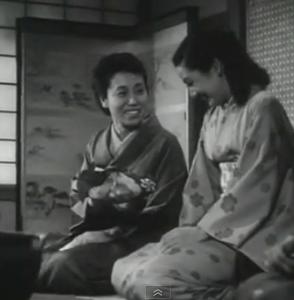
(hara121.jpg)
Aunt Masa and Noriko

Shukichi's sister, Aunt Masa, convinces him that it is high time his daughter got married. Noriko is friendly with her father’s assistant, Hattori, and Aunt Masa suggests to her brother that he ask Noriko if she might be interested in Hattori. When he does bring up the subject, however, Noriko laughs: Hattori already has been engaged to another girl for quite some time.
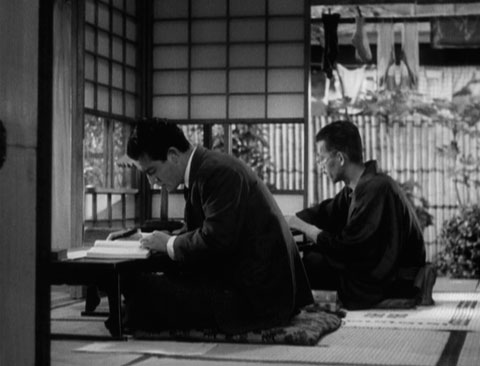
(hara120.jpg)
Hattori and Shukichi

Undaunted, Masa tries to serve as her niece’s matchmaker. She pressures Noriko to meet with a marriageable young man, a Tokyo University graduate named Satake who, Masa believes, bears a strong resemblance to Gary Cooper.
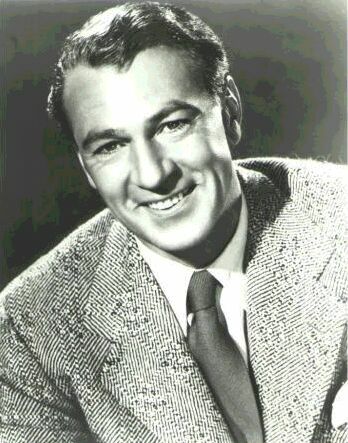
(gary03.jpg)
Gary Cooper

I like Gary Cooper, too.

Oh, do you? But Noriko declines.
How come?
Noriko doesn’t wish to marry anyone, because to do so would leave her father alone and helpless. Masa surprises Noriko by claiming that she is also trying to arrange a match between Shukichi and Mrs. Miwa, an attractive young widow known to Noriko. If Masa succeeds, it would mean Shukichi would have someone other than Noriko to care for him.
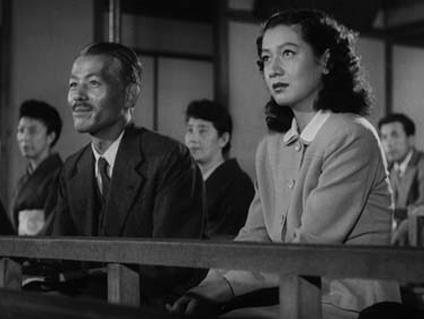
(hara110.jpg)
Shukichi and Noriko at a Noh theater

At a Noh performance attended by Noriko and her father, the latter nods to Mrs. Miwa, which triggers Noriko's jealousy.
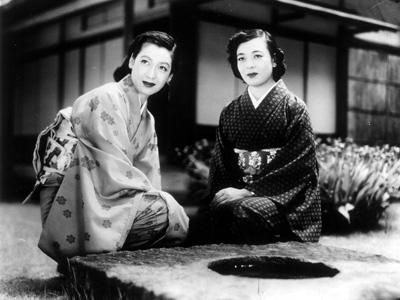
(hara117.jpg)
Noriko and Mrs. Miwa

When her father later tries to talk her into going to meet Satake, he tells her that he intends to marry Mrs. Miwa. Devastated, Noriko reluctantly decides to meet the young man and, to her surprise, gains a very favorable impression of him. Shaken by thoughts of her father taking a second wife, Noriko gives in and consents to the arranged marriage with Satake. Noriko and her father go on one last trip before the wedding to Kyoto, where they meet Prof. Onodera and his family.

(hara116.jpg)
Noriko and Prof. Onodera
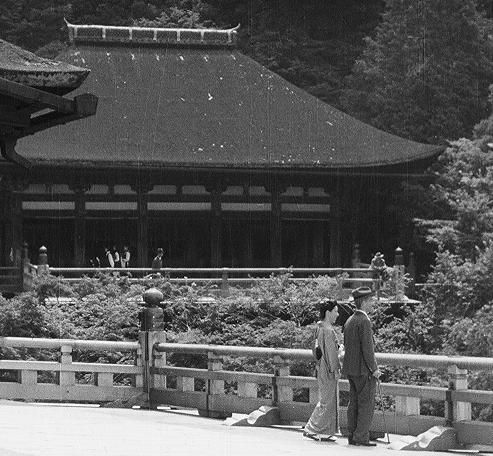
(hara118.jpg)
Kiyomizu Temple in Kyoto

Noriko changes her opinion of Onodera's remarriage when she discovers that his new wife is a nice person.

(hara113.jpg)
Noriko and her father

Noriko and her father, Shukichi, sat down on their futon at an inn in Kyoto during the father and daughter's last trip together. Noriko and her father had enjoyed sightseeing and visiting with Professor Onodera and his wife and daughter. Now Noriko discusses what Noriko plans to do tomorrow. Then they decide to turn in for the night. Noriko turns out the ceiling light and they lie down on their separate futons on the floor of the inn. Noriko talks about what a nice person Onodera's new wife is, and how embarrassed and even ashamed she feels for having called Onodera's remarriage "filthy." Shukichi assures Noriko that she should not worry about it, because Onodera never took her words seriously. After Noriko confesses to her father that she found the thought of his own remarriage "distasteful," she looks over to discover that he is already asleep, or seems to be. She looks up towards the ceiling and appears to smile. There follows a six-second medium shot, in the semidarkness, of a vase on the floor in the same room, in front of a shōji screen through which the shadows of leafy branches can be seen. There is a cut back to Noriko, now looking sad and pensive, almost in tears. Then there is a ten-second shot of the vase again, as the music on the soundtrack swells, cuing the next scene at the Ryōan-temple rock garden in Kyoto.

(hara115.jpg)
Noriko and her father

While packing their luggage for the trip home, Noriko asks her father why they can't simply stay as they are now, even if he does remarry – she is very happy living with him and marriage certainly wouldn’t make her any happier.

So, Noriko really loves her father, doesn't she?
Yes, she does. But Shukichi admonishes her, saying that she must embrace the new life she will build with Satake, one in which Shukichi will have no part, because "that’s the order of human life and history." Noriko asks her father’s forgiveness for her "selfishness" and agrees to go ahead with the marriage.
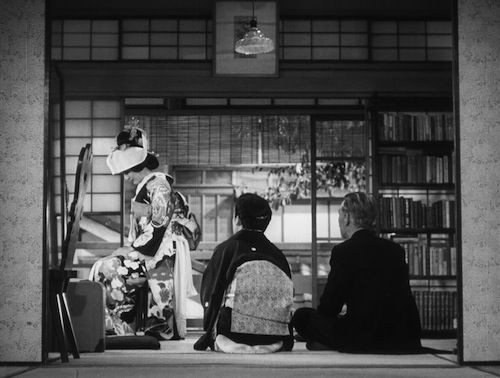
(hara119.jpg)

Noriko’s wedding day arrives. At home just before the ceremony, both Shukichi and Masa admire Noriko, who is dressed in a traditional wedding costume. Noriko thanks her father for the care he has taken of her throughout her life and then leaves in a hired car for the wedding.
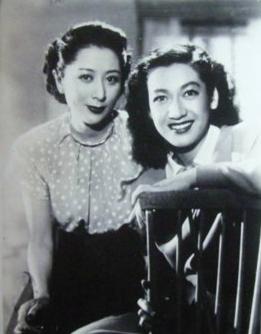
(hara122.jpg)
Aya and Noriko

Afterwards, Aya, a divorced friend of Noriko’s, goes with Shukichi to a bar, where he confesses that his claim that he was going to marry Mrs. Miwa was a ruse all along; he had said so only to help persuade Noriko to get married herself. Aya, touched by his sacrifice, promises to visit him often. Shukichi returns home and faces the quiet night all alone.

...sounds quite interesting. By the way, is there any explicit incestuous scene?
No, not really...no such disgusting scenes at all. Do you want to see sexually explicit scenes?
No, I don't. But without such scenes, "Late Spring" would be monotonous, wouldn't it?
Oh, come on, Diane...believe me..."Late Spring" is one of the best movies I've ever seen...especially, the Electra-complex scenes of father and daughter.
I wish I could see the movie.
Of course, you can see it.
But, I cannot understand Japanese.
You can borrow the DVD with English subtitles.
Where can I get it?
From Joe Fortes Library. If You cannot find it, you can always reserve one.
I can hardly wait. I gotta run now.
You'd better. I assure you, you wouldn't regret it.
【Himiko's Monologue】

I consider "Tokyo Story" to be the best of all Ozu's movies.
Tokyo Story (1953) Directed by Yasujirô Ozu
(Full Movie: 2 hours 15 mins.)
With English translation
It tells the story of an aging couple who travel to Tokyo to visit their grown children.
The film contrasts the behavior of their biological children, who are too busy to pay them much attention, and their daughter-in-law played by Setsuko Hara, who treats them with kindness.
It is often regarded as Ozu's masterpiece, and has twice appeared in Sight & Sound magazine's 'Top Ten' list of the greatest films ever made.
In any case, I'd like to meet my "Romeo"---a decent man in my future life.
How come I'm always a loner?
I wish I could meet a nice gentleman at the library in my town as Diane met Kato.
Well, they say, there is a way where there is a will.
I hope Kato will write another interesting article.
So please come back to see me.
Have a nice day!
Bye bye ...


If you've got some time,
Please read one of the following artciles:

■"Hello Diane!"
■"I wish you were there!"
■"Jane Eyre"

■"Jane Eyre Again"
■"Jane Eyre in Vancouver"
■"Jane Eyre Special"
■"Love & Death of Cleopatra"
■"Nice Story"

■"Scrumdiddlyumptious"
■"Spiritual Work or What?"
■"What a coincidence!"

■"Wind and Water"
■"Yoga and Happiness"
■"You're in a good shape"

■"Hellelujah!"
■"Ecclesiophobia"
■"Uncorruptible"
■"Net Travel & Jane"

■"Net Love"
■"Complicated Love"
■"Electra Complex"
■"Net Début"
■"Inner World"

■"Madame Riviera and Burger"
■"Roly-poly in the North"
■"Amazing Grace"
■"Diane in Paris"
■"Diane in Montmartre"

■"Diane Well Read"
■"Wantirna South"
■"Maiden's Prayer"
■"Bandwidth"
■"Squaw House and Melbourne Hotel"

■"Tulips and Diane"
■"Diane in Bustle Skirt"
■"Diane and Beauty"
■"Lady Chatterley and Beauty"
■"Victorian Prudery"

■"Diane Chatterley"
■"From Canada to Japan"
■"From Gyoda to Vancouver"
■"Film Festival"
■"Madame Taliesin"
■"Happy Days"
■"Vancouver Again"
■"Swansea"

■"Midnight in Vancouver"
■"Madame Lindbergh"
■"Dead Poets Society"
■"Letters to Diane"
■"Taliesin Studio"

■"Wright and Japan"
■"Taliesin Banzai"
■"Memrory Lane to Sendai"
■"Aunt Sleepie"
■"Titanic @ Sendai"
■"Birdcage"
■"Roly-poly in the wild"
■"Silence is dull"
■"Zen and Chi Gong"
■"Piano Lesson"
■"Dangerous Relation"


Hi, I'm June Adames.
In Neo-Freudian psychology, the Electra complex, as proposed by Carl Gustav Jung, is a girl’s psychosexual competition with mother for possession of father.
In the course of her psychosexual development, the complex is the girl’s phallic stage formation of a discrete sexual identity; a boy’s analogous experience is the Oedipus complex.
The Electra complex occurs in the third — phallic stage (ages 3–6) — of five psychosexual development stages:
1) the Oral,
2) the Anal,
3) the Phallic,
4) the Latent, and
5) the Genital — in which the source libido pleasure is in a different erogenous zone of the infant’s body.
In classical psychoanalytic theory, the child’s identification with the same-sex parent is the successful resolution of the Electra complex and of the Oedipus complex; his and her key psychological experience to developing a mature sexual role and identity.
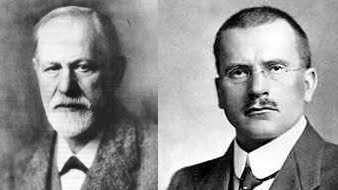
(danger04.jpg)
Sigmund Freud (left) and Carl Jung
Sigmund Freud instead proposed that girls and boys resolved their complexes differently — she via penis envy, he via castration anxiety; and that unsuccessful resolutions might lead to neurosis, paedophilia, and homosexuality.
Hence, women and men who are fixated in the Electra and Oedipal stages of their psychosexual development might be considered “father-fixated” and “mother-fixated” as revealed when the mate (sexual partner) resembles the father or the mother.

ところで、愛とロマンに満ちた
レンゲさんのお話をまとめて
『レンゲ物語』を作りました。
もし、レンゲさんの記事をまとめて読みたいならば、
次のリンクをクリックしてくださいね。
■『愛とロマンのレンゲ物語』

■『軽井沢タリアセン夫人 - 小百合物語』
とにかく、今日も一日楽しく愉快に
ネットサーフィンしましょうね。
じゃあね。







0 件のコメント:
コメントを投稿